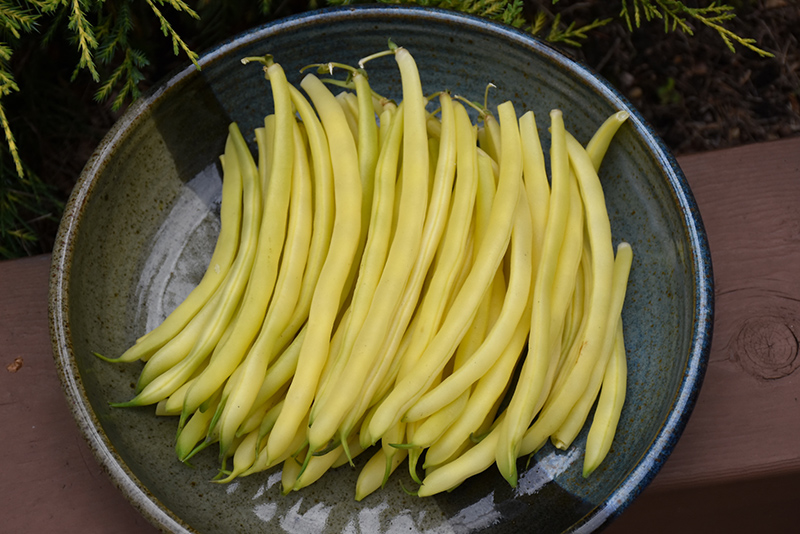Plant Library
Gold Rush Bush Bean
Phaseolus vulgaris 'Gold Rush'
Height: 20 inches
Spacing: 6 inches
Sunlight:
![]()
Hardiness Zone: (annual)
Description:
High yields on a compact bush type plant, perfect for large containers or small gardens; produces golden yellow wax beans reaching 5 inches in length; tender and delicious, great for canning, freezing, salads, steaming and so much more
Edible Qualities
Gold Rush Bush Bean is an annual vegetable plant that is commonly grown for its edible qualities. The entire above-ground parts of the plant are edible, and can be harvested at any time in the season. The edible parts have a mild taste and a crisp texture.
The plant is most often used in the following ways:
- Fresh Eating
- Eating When Cooked/Prepared
- Cooking
- Pickling
- Freezing
Planting & Growing
Gold Rush Bush Bean will grow to be about 20 inches tall at maturity, with a spread of 18 inches. When planted in rows, individual plants should be spaced approximately 6 inches apart. This fast-growing vegetable plant is an annual, which means that it will grow for one season in your garden and then die after producing a crop.
This plant is typically grown in a designated vegetable garden. It should only be grown in full sunlight. It does best in average conditions that are neither too wet nor too dry, and is very intolerant of standing water. This plant does not require much in the way of fertilizing once established. It is not particular as to soil pH, but grows best in rich soils. It is quite intolerant of urban pollution, therefore inner city or urban streetside plantings are best avoided. Consider applying a thick mulch around the root zone over the growing season to conserve soil moisture. This is a selected variety of a species not originally from North America.
Gold Rush Bush Bean is a good choice for the vegetable garden, but it is also well-suited for use in outdoor pots and containers. With its upright habit of growth, it is best suited for use as a 'thriller' in the 'spiller-thriller-filler' container combination; plant it near the center of the pot, surrounded by smaller plants and those that spill over the edges. Note that when growing plants in outdoor containers and baskets, they may require more frequent waterings than they would in the yard or garden.





